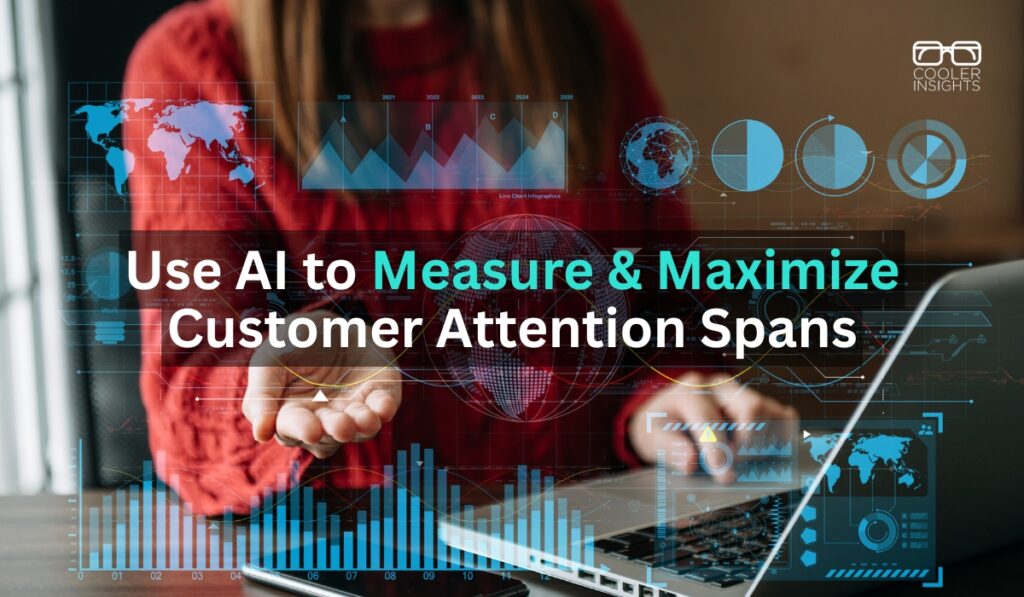
Contrary to popular belief, self-deception is very much a part of who you are.
Many of us fabricate fictional narratives that run our lives — from the moment we awake to the time we fall asleep.

Contrary to popular belief, self-deception is very much a part of who you are.
Many of us fabricate fictional narratives that run our lives — from the moment we awake to the time we fall asleep.

Have you heard about multimodal Artificial Intelligence (AI)? Well, its the latest development in the fast progressing world of AI tools.
These days, text-only analytics are a thing of the past as AI and Machine Learning (ML) advance exponentially.

Artificial intelligence (AI) is no longer a futuristic buzzword tucked into tech blogs and innovation panels. It’s doing the heavy lifting behind marketing automation, product recommendations, customer support, and digital content.
For small business owners, marketers, and brand strategists, the question isn’t whether to use AI — it’s how to use it without losing the trust of your audience.

Grabbing and keeping customer awareness is now harder than ever. With endless content competing for eyeballs, consumers have grown more selective and distracted.
The average attention span is shrinking, meaning you have far less time to make an impact. To stay ahead, brands must rethink how they engage audiences, which means turning to artificial intelligence for help.

Courtesy of Microsoft Stock Images
Strategic partnerships have long played a central role in helping businesses grow, especially during the critical phases between launching and scaling. These alliances are more than casual collaborations. They are built on shared objectives, mutual value, and the capacity to fill gaps in capability or market access. For startups and early-stage companies, partnerships can provide access to customers, technology, capital, or operational expertise that would otherwise be out of reach.
For startups, forming the right partnerships early can make the difference between traction and stagnation. New companies often lack the infrastructure, brand recognition, and distribution networks that more established businesses take for granted. Partnering with an established player in a complementary field can provide instant credibility. For instance, a software startup aligning with a larger hardware provider may gain access to a broader customer base while offering added value to the partner’s ecosystem.
These partnerships also allow founders to focus on their core product or service while leaning on external support for areas such as logistics, customer service, or compliance. In highly regulated industries, teaming up with an experienced service provider can accelerate go-to-market timelines and avoid costly delays. However, each partner must contribute meaningfully to avoid imbalance, where one side bears the operational burden while the other gains most of the value.
As businesses begin to scale, the nature and purpose of partnerships often shift. At this stage, efficiency, reach, and specialization become priorities. Rather than relying on one or two foundational partnerships, scaling businesses may build networks across different verticals. These can include channel partnerships to expand distribution, technology alliances to support integration, or marketing collaborations to increase brand visibility.
This phase also demands more formal governance structures. Clear roles, metrics, and performance expectations help prevent misalignment. While flexibility is useful early on, growing companies must learn to manage partnerships like any other part of the business.
Not all partnerships are beneficial. Rushing into an agreement without evaluating long-term compatibility can slow growth or even cause reputational harm. Alignment on values, culture, and strategic direction is essential. A due diligence firm can help assess a prospective partner’s financial health, operational capacity, legal risks, and business practices. These insights provide a foundation for informed decision-making and help avoid missteps.
Partnerships built on short-term convenience or reactive decision-making tend to fall apart when tested. Those that succeed are typically based on well-defined objectives, aligned incentives, and a commitment to shared success over time.
One frequent mistake is failing to reassess partnerships as the business evolves. What works for a five-person startup may not fit a company with 100 employees and a global customer base. Another issue is over-reliance on a single partner, which can create operational or financial risk if that relationship changes. Diversifying alliances while maintaining quality helps mitigate such exposure.
Additionally, unclear communication between partners can lead to misunderstandings and missed opportunities. Regular check-ins, shared performance dashboards, and a mechanism for resolving disputes support transparency and accountability.
Well-managed partnerships can serve as infrastructure for long-term growth. They allow businesses to stay lean while expanding capabilities and reaching new markets. Whether through shared technology, distribution, or knowledge exchange, partnerships offer leverage that internal development alone cannot always match.
The most successful companies treat strategic collaboration as a key function, not an afterthought. They invest time in selecting partners, define success clearly, and build systems to manage those relationships effectively. As startups transition into scaling organizations, these practices help turn strategic partnerships into a durable competitive advantage. Look over the infographic below to learn more.


You’ve probably heard of the art of the start. But what about the culture of completion? Or more precisely, get things done so that you can accomplish your goals.
Like many of you, I can get pretty excited about embarking on new adventures.

Retirement in Singapore requires careful planning, as the cost of living here can be fairly significant, even if you live thriftily. How much exactly do you need for a comfortable retirement in Singapore?
This article explores three distinct retirement scenarios: the Lees, who live a luxurious lifestyle; the Lims, who aim for balance; and the Wongs, who lead a minimalist retirement.

Artificial Intelligence (AI) can now detect emotions, and it’ll change the marketing world like nothing before.
Indeed, the new world of marketing moves beyond what consumers say to what their nonverbal communication reveals. Such a development is only possible with the development of emotionally-sensitive AI.

Heard of the term social commerce? It describes how ecommerce is fast becoming a social media mediated activity.
The line between content consumption and purchasing has indeed blurred in our digital world. What once required multiple steps — discovery to checkout — now happen in moments on your social feed.
: 
Need help to brainstorm the next big idea for your business? Harness the power of hunches.
Thanks to the book Hunch: Turn Your Everyday Insights Into The Next Big Thing by Bernadette Jiwa, we now have a simple way to generate powerful business ideas.